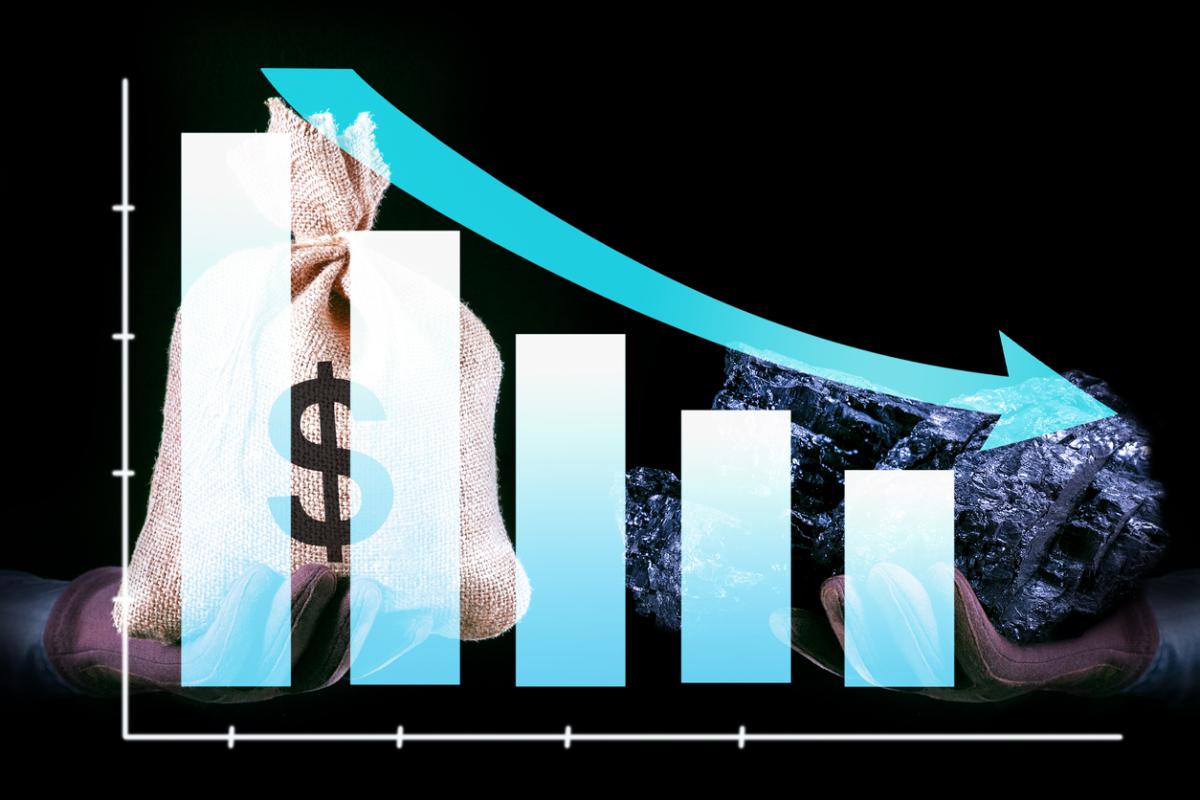The Economics Of Coal Burning Simply Do Not Pencil Out
That’s Good News for Communities, the Environment, and the Climate

The Economics Of Coal Burning Simply Do Not Pencil Out
Did any of your loved ones get a lump of coal for the holidays? Though threatened from time to time in our household, our kids did juuuuuuuuust enough to earn actual Christmas presents this year (that’s tongue-in-cheek - if my kids ever read this years down the line, I want you to know how dang proud of you I am for how you handled your second year of COVID-19).
Coal for naughty listers is a funny old tradition, so I went poking around as to its origins. It seems tied to the fact that 18th and 19th century homes often had coal-burning fireplaces. If you were bad, Santa would just reach down and stick the closest thing at hand in your stocking. It wasn’t because coal was undesirable per se, but rather because it was convenient.
Why Coal is On the Naughty List
It amuses me that coal has had a negative reputation for hundreds of years. Back then, it might have just been a holiday threat made by parents of disobedient youths, but now we know better. Now we know just how dirty and undesirable coal really is. Here is the coal naughty list:
- Underground coal mining is dangerous for workers, with threats including mine shaft collapses, fires, and health threats like black lung;
- Though safer for workers, mining coal via mountaintop removal and other forms of surface mining destroys habitats and can displace entire communities;
- Burning coal releases sulfur dioxide, which causes acid rain and respiratory illnesses;
- Burning coal releases nitrogen oxides, which cause smog and respiratory illnesses;
- Burning coal releases fine particulate matter, which causes smog, haze, and respiratory illnesses (seeing a pattern here?);
- Burning coal releases mercury and other heavy metals, which can cause neurological and developmental health problems;
- Burning coal produces fly ash and bottom ash, which can leach into water supplies;
- Burning coal releases carbon dioxide into the atmosphere, which is the primary contributor to human-caused global warming, and;
- Mining coal often causes a release of underground methane emissions, which also are a significant contributor to climate change.
I guess it’s a good thing that people don’t burn this stuff in their living rooms anymore. Coal as an energy source carries significant public health hazards that go beyond carbon.
Are Coal Regulations Enough?
To be fair, many of these negative impacts from the coal industry are controlled via various environmental regulations. For instance, air scrubbers help to capture sulphur dioxide emissions and coal ash ponds store the toxic coal residue. They don’t always work, however, and the environmental harm from disasters like coal ash pond overflows is immense.
Even when they do work to contain environmental damages, these coal safety measures are expensive. It turns out that we’ve been paying for artificially cheap coal for decades, often thanks to powerful corporate and lobbying interests resisting safety regulations every step of the way.
As more and more Americans realize the climate change threat, you might think that it is concerns about greenhouse gases that would present the biggest challenge to the coal industry.
It turns out, however, that it’s just pure economics that is driving the recent retirement of coal plants.
The Math Doesn’t Work for Coal Plants
This Associated Press article from last fall spells that out clearly. A new wastewater rule was announced at the end of August 2020, and it required many coal power plants to take further action to clean up their discharges into waterways. As that rule begins to come into effect, many power companies that operate coal plants are announcing plans to shut them down rather than bring them into compliance. I’m seeing that (and cheering that) here in my home state of Georgia as well.
It’s all part of the broader trend of coal becoming uneconomic. I pulled data from the US Energy Information Administration’s website to see electricity generation by energy source over the years. Math is incoming, but bear with me here.
In 2000, the electric power industry in America generated 3,802 billion kilowatt hours (kWh) of electricity, with 1,966 billion of them coming from coal (that’s 51.7% of the total). In 2020, the numbers were 4,007 billion kWh of total American electricity with 773 billion of them coming from coal (19.3%). That’s a massive reduction both in gross terms and in grid mix percentage.
Alternatives to Coal Burning: What Are the Options?
It must be said that the primary driver of these reductions in coal use was the rapid adoption of natural gas. That energy source went from 601 billion kWh in 2000 (15.8% of the total) to 1,624 billion kWh in 2020 (40.5%). That’s a growth in natural gas kWh of 270%. Unfortunately, natural gas as an energy source has its own problems (after all, it’s also a fossil fuel that has to be pulled from the earth’s crust), so what about renewables?
I took a look at solar and wind in particular, and together they produced a measly 6 billion kWh in 2000 (0.2% of the total). In 2020 though, the number had soared to 427 billion kWh (10.6%). That’s an increase of more than 7000%! Moreover, as costs continue to decline for renewable energy generation, I expect wind and solar to grab a lot more American grid market share in the coming years.
In a word, coal is dying. Cheap natural gas crippled it over the last two decades, long overdue safety regulations are knocking more coal power plants out of operation early, and the momentum in favor of renewables leaves coal without a future. Thank goodness! The sooner we get our grid off of this no-good-dirty-rotten-pig-stealing great-great-grandfather of an energy source, the better.
This blog is available weekly via email subscription. Click here to subscribe.

